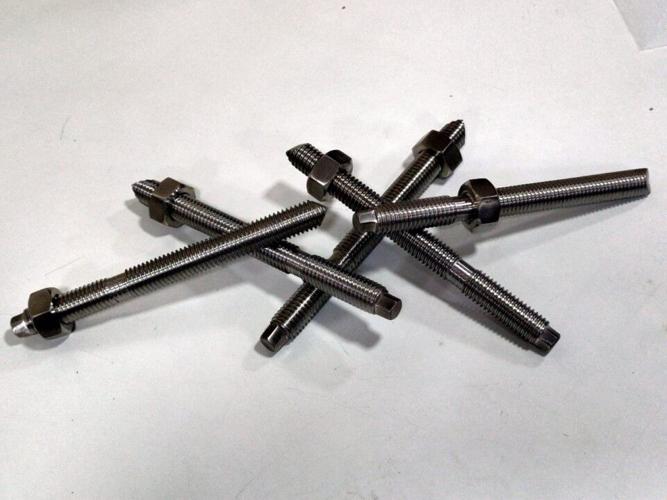Structural stability is paramount in any construction project, whether it's a towering skyscraper or a humble home renovation. The integrity of a structure hinges on the reliability of its fastening systems. In this comprehensive guide, we delve into the world of wedge anchors and screws, exploring their functions, applications, installation techniques, maintenance practices, and future trends.

Understanding Wedge Anchors
Wedge anchors are mechanical devices that securely fasten objects to concrete, brick, or other masonry materials. They consist of a threaded stud, a cone-shaped expansion plug, and a nut and washer assembly. When installed correctly, the expansion plug expands and wedges tightly against the walls of the pre-drilled hole, creating a strong and reliable connection.
Types and Applications
Wedge anchors come in various types, including fully threaded, partially threaded, and stainless steel options. Fully threaded anchors are ideal for applications requiring maximum thread engagement, while partially threaded anchors offer versatility in different substrate thicknesses. Stainless steel anchors provide superior corrosion resistance, making them suitable for outdoor and marine environments.
Key Considerations
Selecting the right wedge anchor involves considering load capacity, material compatibility, and environmental conditions. Choosing anchors that can withstand the intended load and environmental factors like moisture, temperature fluctuations, and chemical exposure is crucial.
Exploring Screw Fasteners
Screws are versatile fasteners commonly used in construction, woodworking, and household applications. They come in various types, including wood screws, machine screws, and self-tapping screws for metal. Each type has distinct characteristics suited for specific applications and materials.
Materials and Properties
Screws are available in different materials, including steel, stainless steel, brass, and aluminum. The choice of material depends on factors such as strength, corrosion resistance, and aesthetics. Stainless steel screws, for example, are preferred for outdoor and high-moisture environments due to their rust-resistant properties.
Selecting the Right Screw
Choosing the right screw involves considering factors such as head type, thread design, and corrosion resistance. Phillips, flathead, and hexagonal are among the common screw head types, each offering unique advantages in terms of installation and appearance. Thread design and pitch determine how effectively the screw grips the material, while corrosion-resistant coatings enhance longevity in harsh environments.

Comparative Analysis: Wedge Anchors vs. Screws
Wedge anchors and screws each have their strengths and weaknesses depending on the application and substrate material. Wedge anchors provide robust anchoring solutions for heavy loads and challenging environments, while screws offer versatility and ease of installation in various materials. Understanding the differences between the two helps in choosing the most suitable fastening method for specific project requirements.
Installation Techniques
Proper installation of wedge anchors is crucial for achieving optimal strength and stability. The process involves drilling a precise hole, cleaning the hole of debris, inserting the anchor, and tightening the nut to expand the plug. Following manufacturer guidelines and using appropriate tools ensure secure and reliable fastening.
Screw Installation Best Practices
Installing screws requires careful consideration of factors such as pilot hole size, screw length, and driving torque. Pre-drilling pilot holes prevent splitting and damage to the material while ensuring accurate screw placement. Using the correct screwdriver or drill bit minimizes the risk of stripping the screw head or damaging the surrounding material.
Maintenance and Inspection
Regular maintenance and inspection are essential for ensuring the continued integrity of fastening systems. Periodic checks for signs of corrosion, loosening, or degradation help identify potential issues before they escalate. Implementing a maintenance schedule and promptly addressing any concerns prolongs the lifespan of wedge anchors and screws, contributing to long-term structural stability.
Case Studies and Examples
Real-world examples illustrate the practical applications and effectiveness of wedge anchors and screws in various construction projects. From securing structural beams to installing fixtures and fittings, proper fastening techniques play a critical role in ensuring safety and durability.

Troubleshooting and Solutions
Common problems encountered during fastening, such as improper installation, insufficient torque, or material mismatch, require prompt troubleshooting and corrective action. Identifying the root cause of the issue and implementing appropriate solutions prevent structural failures and costly repairs down the line.
Future Trends and Innovations
Advancements in fastening technology continue to drive innovation in the construction industry. From sustainable materials to smart fastening systems, future trends aim to improve efficiency, durability, and environmental sustainability. Keeping abreast of these developments ensures that construction professionals remain at the forefront of industry standards and practices.
Conclusion
In conclusion, fastening with confidence requires a thorough understanding of wedge anchors and screws, their applications, installation techniques, and maintenance practices. By adhering to best practices and staying informed about emerging trends, construction professionals can ensure the structural stability and longevity of their projects. Embracing innovation and continuous improvement pave the way for safer, more resilient built environments.





(0) comments
We welcome your comments
Log In
Post a comment as Guest
Keep it Clean. Please avoid obscene, vulgar, lewd, racist or sexually-oriented language.
PLEASE TURN OFF YOUR CAPS LOCK.
Don't Threaten. Threats of harming another person will not be tolerated.
Be Truthful. Don't knowingly lie about anyone or anything.
Be Nice. No racism, sexism or any sort of -ism that is degrading to another person.
Be Proactive. Use the 'Report' link on each comment to let us know of abusive posts.
Share with Us. We'd love to hear eyewitness accounts, the history behind an article.